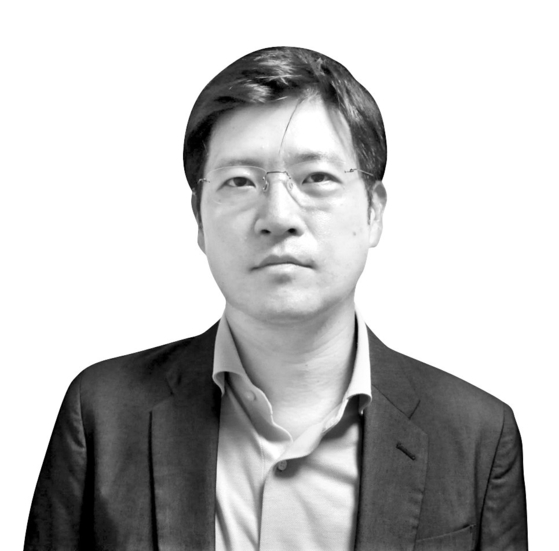[Column] Two farcical stunts in parallel

Seo Seung-wook
The author is an editorial writer of the JoongAng Ilbo.
The vain showcase Democratic Party (DP) lawmakers put up with their visit to Japan to protest the Japanese government’s plan to release treated water from the crippled Fukushima nuclear complex reminded me of our strenuous investigative trip to the area nine years ago. It was late February 2014, shortly before the third year since the nuclear meltdown in Fukushima.
I traveled with my senior correspondent in Tokyo and two photojournalists. We ventured into sea fishing in the waters near the first nuclear unit in Fukushima. We rode a trawler 100 meters (109 yards) off the nuclear plant to measure radiation levels in the sea on the first day and caught fish to examine radioactive substances in them on the second day. The three-day trip took three months of preparation.
Given the hostility toward South Korean reporters, the idea itself was a “mission impossible.” Still, we were able to pull it off through persistent persuasion and thorough preparation. It had taken about two months to receive permission from fishing cooperatives in Iwaki, a city near the nuclear complex, and the Japan Coast Guard to get close to the reactor area in a fishing boat. Arranging a boat, a strontium test to scan a fish sample and an examiner from the local fisheries agency to confirm the findings also was tough, not to mention wrestling with rough winds and waves on the boat. Still, the work was productive and rewarding. A radiation detector rang loud as soon as it touched a concrete structure at a dike near the reactor. The radiation level exceeded 110 times the permissible limit. A fish caught 20 kilometers (12.4 miles) off the reactor had radioactive cesium double the government limit. The effects of the Fukushima disaster remained loud and clear.
Japan, compared to South Korea, takes longer to act. A foreigner would have to wait at a sales outlet for more than four hours to get a new smartphone connected. Lawmakers making an official visit to Japan should have been more delicately and meticulously prepared for their trip than journalists. But they obviously did not, since they could not meet any executives from Tokyo Electric Power Company responsible for the nuclear power complex operation. They were merely able to hand over a letter requesting to see related documents to an employee. Of course, they could not make a visit to the reactor complex. They should have filed the necessary requests months ago. But they claimed that the request they made a few days prior was denied. They managed to meet one municipal councilman, one resident and one doctor in Fukushima. Only one resident turned up at a hearing they staged. To make matters worse, the clinic they visited was located in an area the Tokyo government suspects as the base for extreme leftists. To add to their embarrassment, no Japanese lawmakers took the time to meet them.
The four DP lawmakers who returned empty-handed lauded themselves for delivering their concerns to the Japanese. Well-preparedness or itinerary would not have mattered to them if their sole purpose was to get pictures to be used by domestic media. Whom they met or where they went was not important as long as they indulged anti-Japanese sentiments among Koreans.
I remember a similar episode performed by Japanese politicians 12 years ago. Three outspoken right-wing lawmakers from the Liberal Democratic Party arrived at Gimpo International Airport with a plan to visit Ulleungdo, an island adjacent to the disputed Dokdo islets, known as Takeshima in Japan. They were turned away after a nine-hour sit-in at the airport. The stampede and unfruitful return had been identical to the Korean lawmakers’ latest stunt. The performance of the right-wing trio — Yoshitaka Shindo, Tomomi Inada and Masahisa Sato — was also for the audience back at home. Conservative politicians in Japan take hostile actions toward Korea to appeal to ultra-rightists in their country. The dangerous co-feeding of blind anti-Japanese sentiment in Korea and antagonism toward Koreans in Japan poses the biggest stumbling block to future Korea-Japan relations. The 2011 fiasco at Gimpo Airport and the 2023 Fukushima episode are sad proof.










with the Korea JoongAng Daily
To write comments, please log in to one of the accounts.
Standards Board Policy (0/250자)